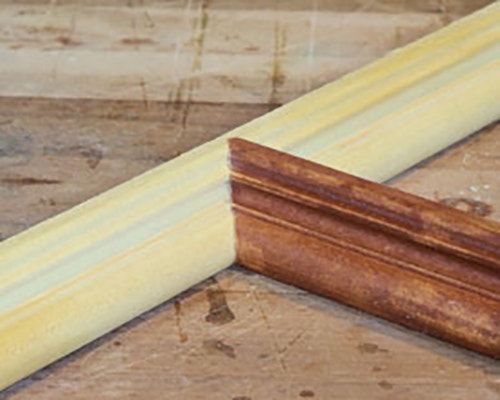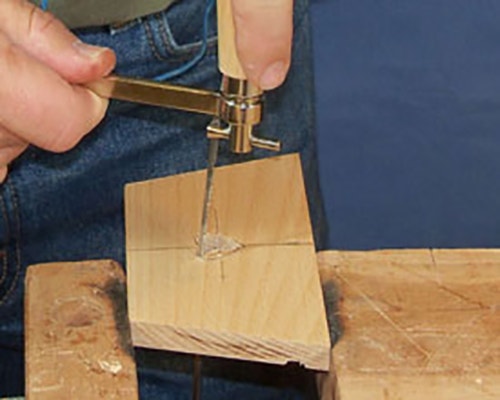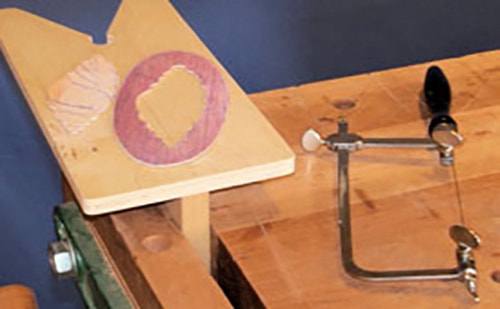Hand Saw Overview: Coping Saw
Unlike most saws, the coping saw is specifically designed to cut curves. The high frame and pivoting blade allow cutting intricate designs well in from the edge of a part. The replaceable blades come in a wide variety of sizes and tooth designs from different tasks.

'Coping' is the process of cutting a negative profile to join two parts in an inside corner without having to miter. Coping a joint can be a faster and more accurate when running trim, especially when the corners are not square.

To make the process easier, cut an angle in the molding which creates a clear line to cut along (I stained the molding for photographic clarity). Then use the coping saw to cut along the line where the angle meets the profile. Cutting at a slight angle sloping toward the back of the molding allows clearance in non-square joints. For very tight curves, it is helpful to cut relief slots straight into the angle.

Coping saws are also useful as hole saws. The thin blade is easy to detach and feed through a drilled hole allowing for scroll saw type work. Below, I am cutting a heart shaped hole in the apron of a tall plant stand. I penciled the design onto the part, drilled a small hole inside the lines and fed the blade through the hole. The thin blade allows for cutting fairly tight curves, and if the frame gets in the way, the blade can be rotated for better access.

A close cousin of the coping saw is the fret saw. It works pretty much the same as the coping saw, but has much finer blades for tighter corners and more highly detailed work like veneering and inlays.
The coping saw can do many tasks that might fall to a bandsaw, scroll saw or jigsaw, costs a fraction of any of those, and is ready anywhere or anytime needed. These attributes are why a coping saw can always be found in my shop and why it is second on my list of must-have handsaws.
Keep the inspiration coming!
Subscribe to our newsletter for more woodworking tips and tricks




